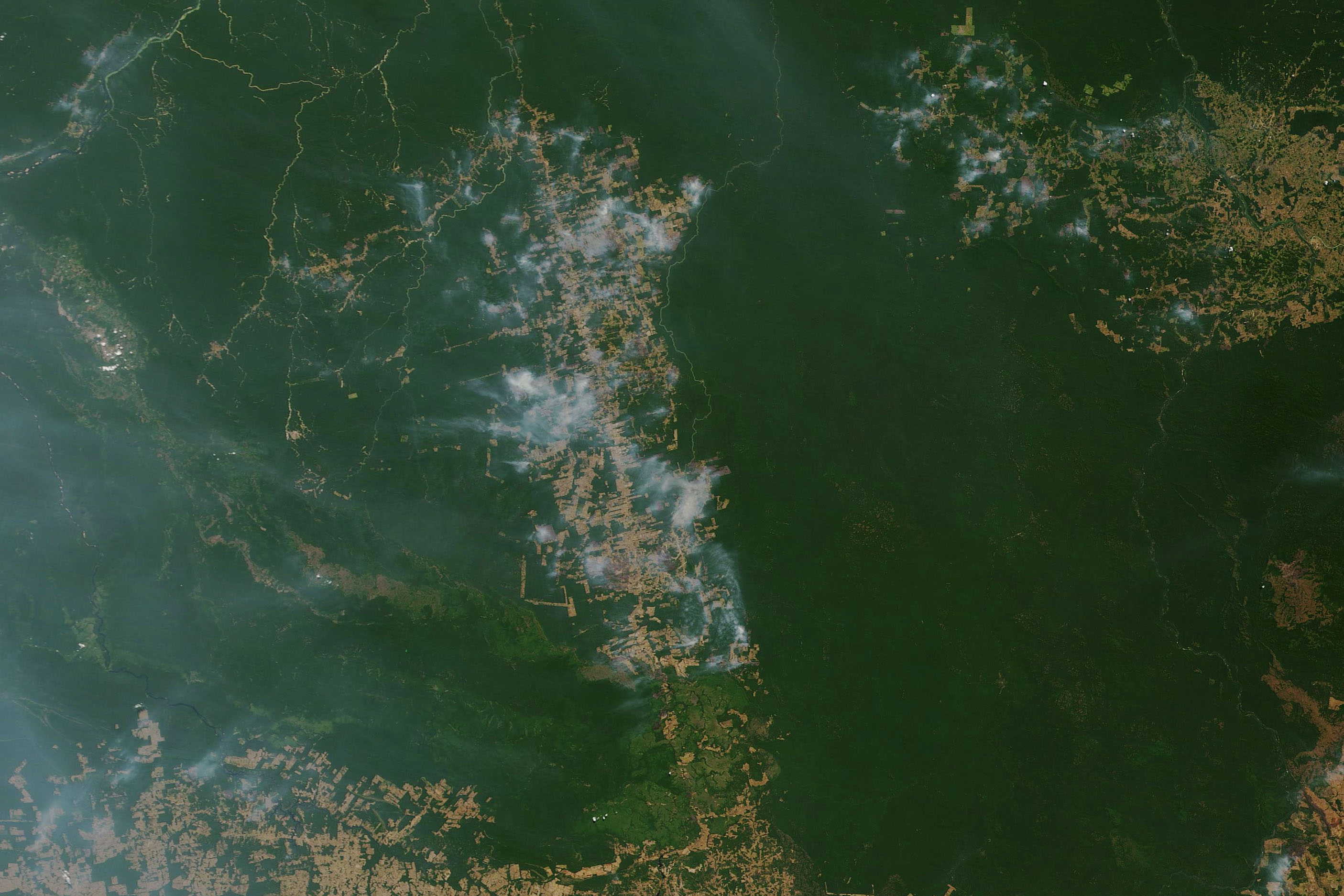NASA Satellites Confirm Amazon Rainforest Is Burning at a Record Rate
The ongoing fires are the most active in Brazil since the year 2010.

As raging fires continue to sweep through the Amazon rainforest in Brazil, NASA satellites and astronauts aboard the International Space Station are tracking the flames from above. Their view confirmed that this is the most active fire year in Brazil since 2010.
Fire detections by NASA's Moderate Resolution Imaging Spectroradiometer (MODIS) on the Aqua satellite have been the highest since the year 2010 so far, with indications that 2019 may hit a record number of fires in the Amazon. NASA has been using MODIS sensors to detect thermal anomalies all over the world since 2003.
The timing and location of MODIS' fire detections during this year's dry season in the rainforest are more consistent with land clearing than regional drought, Douglas Morton, chief of the Biospheric Sciences Laboratory at NASA's Goddard Space Flight Center, said in a statement by NASA.
Related: As Fires Devastate the Amazon Rainforest, NASA Satellites Capture Grim Images
"MODIS detections are higher in 2019 than at this time last year in all seven states that comprise the Brazilian Amazon," Morton added.
The Amazon rainforest has been ablaze for weeks now. The fires have sparked public outcry as environmentalists blame loggers and ranchers for setting the flames in order to open more land to agriculture — serving a massive blow to the ongoing fight against the effects of climate change.
Data from the Atmospheric Infrared Sounder (AIRS) on NASA's Aqua satellite shows a plume of carbon monoxide, a pollutant that stays in the atmosphere for about a month, in the northwest region of the Amazon, spreading toward the south and the east toward Sao Paolo at an altitude of 18,000 feet (5,500 meters), according to a statement by NASA.
Breaking space news, the latest updates on rocket launches, skywatching events and more!
The smoke, visible for thousands of kilometres, of tens of human-caused fires in the Amazon forest. #noplanetB #MissionBeyond pic.twitter.com/SyoydfJo39August 26, 2019
Astronauts on board the International Space Station can also observe the smoke engulfing the Amazon from space. European Space Agency astronaut Luca Parmitano tweeted earlier today (Aug. 26) four images that show clouds of smoke hovering over the rainforest. "The smoke, visible for thousands of kilometres, of tens of human-caused fires in the Amazon forest," he wrote.
Leaders at the 45th G7 Summit (an annual meeting of the most economically developed countries in the world) today vowed to provide $22 million toward fire-fighting planes and other relief efforts for the Amazon rainforest, according to BBC.
- Brazil's Space Agency Head Was Forced Out for Defending Climate Science
- Climate Change Strengthens Earth's 'Heartbeat'
- Bill Nye Brings Out the F-Bombs and a Blowtorch to Talk Climate Change
This article was updated on Aug. 28 to delete an inaccurate percentage of how much oxygen is provided by the Amazon rainforest.
Follow Passant Rabie on Twitter @passantrabie. Follow us on Twitter @Spacedotcom and on Facebook.

Passant Rabie is an award-winning journalist from Cairo, Egypt. Rabie moved to New York to pursue a master's degree in science journalism at New York University. She developed a strong passion for all things space, and guiding readers through the mysteries of the local universe. Rabie covers ongoing missions to distant planets and beyond, and breaks down recent discoveries in the world of astrophysics and the latest in ongoing space news. Prior to moving to New York, she spent years writing for independent media outlets across the Middle East and aims to produce accurate coverage of science stories within a regional context.


